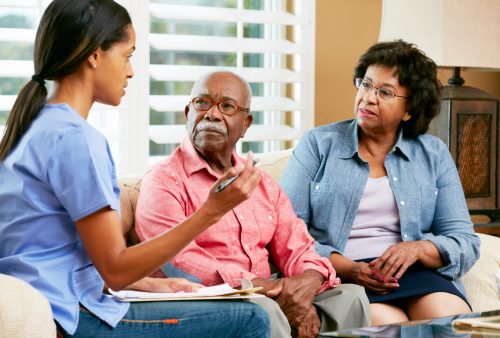Excitement About Stroke Recovery
Table of ContentsThe Basic Principles Of Stroke Recovery The Single Strategy To Use For Stroke RecoverySome Ideas on Stroke Recovery You Need To Know
Foods high in salt might increase blood pressure. Cutting down on calories can help in reducing obesity. A diet plan that consists of a lot of vegetables, fruits, and whole grains, along with more fish and less meat (especially red meat) is recommended to lower stroke danger. Unfortunately, there are some threat elements that individuals can not control, such as household history of strokes, gender (guys are most likely to have a stroke), and race (African Americans, Native Americans, and Alaskan Locals all have increased threat for strokes).Emergency situation stroke treatment depends on the type of stroke and underlying health of the client. Ischemic strokes are treated by techniques developed to get rid of (liquify) or bypass a clot in the brain while hemorrhagic strokes are treated by attempts to stop the bleeding in the brain, control high blood pressure, and decrease brain swelling.
Aspirin belongs to a group of drugs called antiplatelet representatives. Antiplatelet representatives like aspirin help avoid blood cell pieces from sticking together and forming embolisms, and are for that reason helpful at avoiding some kinds of stroke. The American Heart Association advises taking aspirin within 2 days of an ischemic stroke to reduce the stroke's seriousness.
TPA can be used to treat ischemic strokes. stroke recovery. It is given through the arm as an IV, and helps liquify embolism and improve blood circulation through areas of the brain blocked by embolisms. TPA may help if it is used within three hours of a stroke happening. Strokes that cause long-lasting damage are generally severe and/or not treated or treated after big sections of the brain have actually been harmed or killed.
Although some problems will be long-term, many individuals that do rehab can regain some or numerous of the abilities lost in the stroke. If a stroke harms a person's capability to use language and to speak or swallow, rehabilitation with a speech therapist, can assist an individual regain some or the majority of the abilities they lost at first with the stroke.
Fascination About Stroke Recovery

It prevails for people to have emotional responses after a stroke. A psychologist or other mental health professional can assist individuals adjust to their new obstacles and situations. These specialists utilize talk therapy and other approaches to assist individuals with reactions such as anxiety, fear, worries, grief, and anger.

Medications have adverse great post to read effects so go over these with you doctor. There are some surgical choices for stroke avoidance. Some patients have actually plaque- narrowed carotid arteries. stroke recovery. The plaque can take part in clot development in the artery and can even shed clots to important source other areas in the brain's capillary. Carotid endarterectomy is a surgery where the surgeon eliminates plaque from the within the arteries to minimize the opportunity of strokes in the future.
Pumping up the balloon presses plaque aside and increases the vessel's lumen (opens up the vessel). This opened artery then is reinforced (kept open) by an expandable stent that, when expanded, becomes rigid. About two-thirds of individuals (over 700,000) that have a stroke each year make it through and usually need some level of rehabilitation.
The Definitive Guide to Stroke Recovery

A stroke is an emergency scenario, and the faster you receive treatment the much better. However what occurs in the days, weeks and months after a stroke? Johns Hopkins stroke rehab expert April Pruski, M.D., explains that "sometimes, the procedure can be sluggish and unsure, and different individuals recover in a series of ways." Although healing looks different for everybody, it can be helpful to get a sense of the stroke recovery timeline so you know what to anticipate after you or a liked one experiences a stroke.
Watch out for these indications. If you experience a stroke, you will likely be initially admitted to an emergency department to support your condition and identify the kind of stroke. If it is triggered by a blood clot (ischemic stroke), clot-busting medication can help in reducing long-lasting effects if you are dealt with in time.
" Starting rehab as soon as possible after the cause of the stroke is dealt with is crucial in stroke healing," states Pruski. "At Johns Hopkins, rehabilitation begins around 24 hr after a stroke." The rehabilitation team consists of physiatrists, neurologists, physical and physical therapists, speech-language pathologists and nurses. They meet day-to-day to talk about the patient's condition, and some form of therapy is provided as typically as every hour during the first day or 2.
During this time, the stroke care group will assess the effects of the stroke, which will figure out the rehabilitation plan. The long-lasting effects of stroke which vary from individual to individual, depending on the stroke's severity and the location of the brain impacted click this site may include: like memory problems and difficulty speaking such as weakness, paralysis and problem swallowing like anxiety and impulsivity Physical and occupational therapy can help figure out which locations of the brain are affected by dealing with a patient to complete different jobs, like strolling or brushing hair.